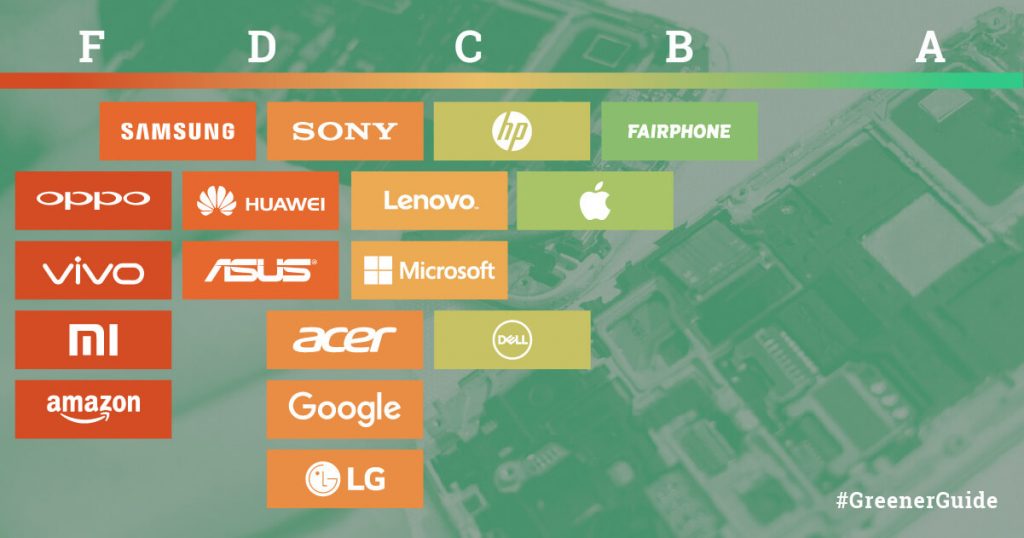Do you know how this device–the one you are reading on right now–got into your hand or onto your desk?
While it probably came out of a pretty box, if you could look through this screen back through the steps involved in making your device, the picture you would see would likely be far from pretty: a supply chain still reliant on dirty energy sources fueling climate change, dangerous mining practices, hazardous chemicals, and poorly designed products that drive consumption of the Earth’s natural resources.
Did you know…
- As much of 80% of the carbon pollution associated with your electronics happens before you even turn them on. Since electronics manufacturing is concentrated in China, where coal is a dominant source of energy, more gadgets being made means more carbon pollution in an area where air pollution already negatively impacts people.
- For the 100g of minerals in each smartphone, miners must dig, chip and process more than 340 times as much rock.
- In 2017, global e-waste volumes were projected to hit 65 million tons, enough to bury San Francisco at a depth of more than 14 feet!
It doesn’t have to be this way, and in fact some brands have at least begun to improve product design or make changes in their supply chains to reduce their impacts on the planet.
[youtube]fJ64BlErou4[/youtube]
Much more than thinner devices or more megapixels, we need a fundamental shift in how our devices are made–a rapid move away from the disposable design that is becoming more prevalent in today’s electronics.
To identify which companies are starting on this transformation, we are re-launching the Guide to Greener Electronics. We spent the last two years looking at the sector from top to bottom, evaluating the efforts of 17 of the largest smartphone, tablet, and PC producers.
We identified three critical areas to measure whether a company is driving the necessary transformation in their product design and supply chains to protect the planet: (1) Renewable Energy Transition, (2) Reducing Resource Consumption, (3) Elimination of Hazardous chemicals.
Highlights from this year’s Guide to Greener Electronics
- Renewable Energy Transition:
The IT sector is estimated to already be responsible for 7-12% of electricity demand globally, with continued rapid growth expected. We’ve seen Apple, Google, Microsoft, and Amazon respond to public concerns and begin transitioning their data centers to renewable sources of energy, but only Apple has extended its commitment to be 100% renewable to include its massive product supply chain. Major players in the sector like Samsung, Huawei, and Amazon do not even make public their supply chain greenhouse gas footprint.
- Reducing Resource Consumption:
More of the earth’s natural resources are going into our devices, to be in use for only a short amount of time before contributing to the 65 metric tons of e-waste generated globally each year. IT companies must break this cycle and abandon planned obsolescence strategies, focusing instead on slowing consumption with devices that are designed to last longer, be easier to repair, and use more recycled materials. Fairphone, Dell, and HP are currently leading the charge in greener product design, while Samsung, Apple and Microsoft are headed in the wrong direction.
- Elimination of Hazardous Chemicals:
Elimination of hazardous chemicals was the main focus of the Guide to Green Electronics from 2007 to 2012. Ten years later, leadership by Apple is evident, but Samsung and several other companies have yet to meet commitments they made in 2009/2010 to eliminate PVC and BFRs from their products. Much greater urgency across the board is needed to eliminate hazardous chemicals that are used in the manufacturing process, starting with known carcinogens, neurotoxins and hormone disrupting chemicals.
Overall, the average grade across the 17 companies in this year’s guide was only a D+, highlighting that most companies have a long way to go to make devices that are sustainable. Fairphone scored the highest overall with a B, and was notable for its strong commitment to a product design that is repairable and upgradeable.
What can you do?
We’ve seen that tech companies respond when they hear from the public, and they need to hear it’s important to take responsibility for their growing footprint on the planet. Tech companies must shift away from their “take, make, waste” business model, to one that preserves natural resources and uses renewable energy.
Electronics made with renewable energy and designed to last? Now that would be innovative.
Let Samsung, Huawei, and Amazon hear from you:
Check out our Guide, share it with your friends, and ask tech companies to give us electronics that are made with renewable energy, reusable materials, and designed to be long-lasting!
Gary Cook is Senior IT Sector Analyst and Energy Campaigner at Greenpeace USA



